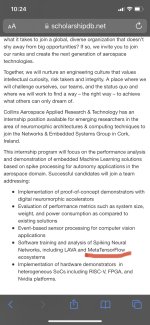Fact Finder
Top 20
“Chris Jones, vice president of products at SiFive, said: “Employing Akida, BrainChip’s specialised, differentiated AI engine, with high-performance RISC-V processors such as the SiFive Intelligence Series is a natural choice for companies looking to seamlessly integrate an optimised processor to dedicated ML accelerators that are a must for the demanding requirements of edge AI computing.”
Then go to SiFive’s website and read that Brainchip is a partner for Ai and then look at SiFive’s Intelligence Series write up.
My opinion only DYOR
FF
AKIDA BALLISTA
Partners Ecosystem - SiFive
View SiFive ecosystem partners that support the RISC-V revolution.
www.sifive.com
These are the SiFive partners. By a process of elimination you can work out which one provides IP for the creation of Ai edge hardware. A big hint the company starts with Brainchip.
My opinion only DYOR
FF
AKIDA BALLISTA




